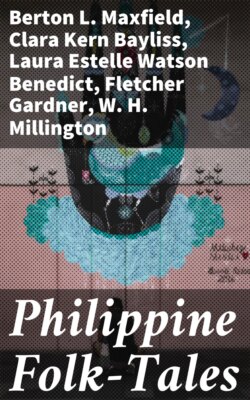Читать книгу Philippine Folk-Tales - Clara Kern Bayliss - Страница 7
На сайте Литреса книга снята с продажи.
PART II
ОглавлениеTable of Contents
Visayan Folk-Tales.
Introduction.
These stories are intended to bring before the American public a few of the tales related by Visayan parents to their children, or by the public story-teller in the market, as the people gather to buy the material for the evening meal. It was only toward the close of a three years' stay in the Islands, in one province, and in neighboring places, and after a fair acquaintance with Spanish and a little knowledge of the native dialect had enabled us to obtain a closer insight into the home life of our pupils than would otherwise have been possible, that we ventured upon the collection of these tales, hoping that they might prove of interest to people at home. Many of the stories were written by our boys and girls as part of their work in English composition. Others were prepared by the native teachers, some of whom had been well educated by the Spaniards and had already learned to write very fair English. Indeed, a few were able, at about the time that these stories were written, to pass the civil service examination for appointment as insular teachers. The articles on the superstitious beliefs of the people were prepared by one of these teachers, so that they might be as nearly correct as possible.
As might be expected, the stories are often very crude and simple, presenting no difficult situations nor intricate plots. Sometimes they resemble well-known tales from other lands, although great care has been taken to collect only those from original sources.
The tales here presented were collected during the spring of 1904, in the island of Panay, belonging to the Visayan group of the Philippine Islands, and were obtained in our own class rooms, from native teachers and pupils. Mr. Maxfield was stationed at Iloilo, and Mr. Millington at Mandurriao, places five miles apart. We daily came in contact with about one thousand pupils. The tales were gathered in both places, and were found to be substantially alike, the differences being only in petty details. After collecting one version, we endeavored to ascertain whether the same narrative was current among natives in other localities of the island. We were surprised to discover that they seemed to be known wherever we became acquainted with the people and had obtained their confidence sufficiently to induce them to talk freely. There were often variations, but the framework was always the same. If any stories were obtained from native teachers who knew Spanish, we have always verified them by getting children or natives from other places, who knew no Spanish, to relate them, in order to assure ourselves that the narrative could not be a mere translation of a Spanish tale.
We who have collected these stories can claim little credit for any more than the mere arrangement of them, as, so far as possible, even the wording of the original manuscripts has been retained. Doubtless, much of the interest we have felt in the work is due to our personal acquaintance with the writers who put on paper for us these simple tales, yet we hope that they will not be wholly unattractive to those for whose sake they have been collected.
February, 1906.
